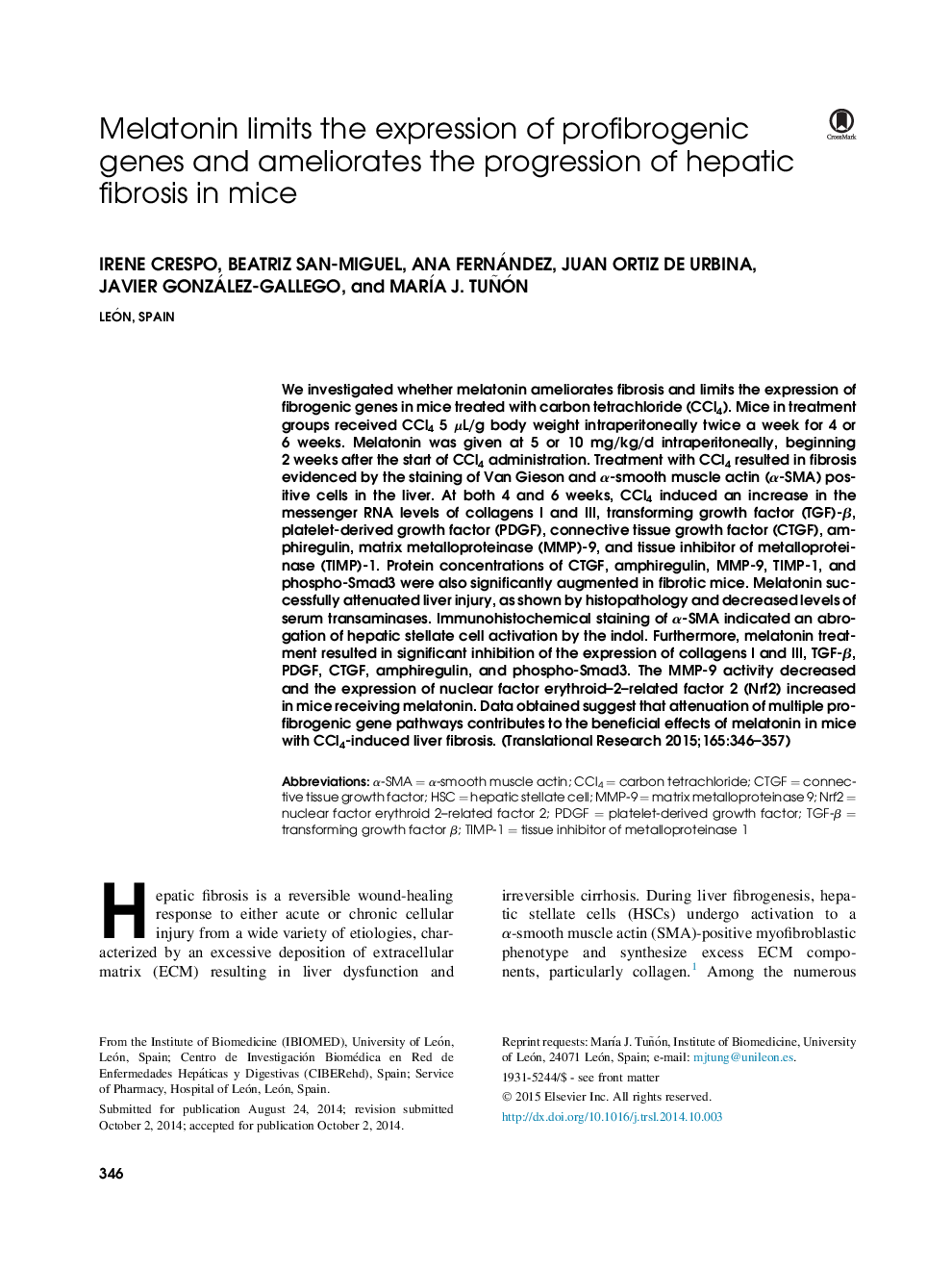| Article ID | Journal | Published Year | Pages | File Type |
|---|---|---|---|---|
| 3840275 | Translational Research | 2015 | 12 Pages |
We investigated whether melatonin ameliorates fibrosis and limits the expression of fibrogenic genes in mice treated with carbon tetrachloride (CCl4). Mice in treatment groups received CCl4 5 μL/g body weight intraperitoneally twice a week for 4 or 6 weeks. Melatonin was given at 5 or 10 mg/kg/d intraperitoneally, beginning 2 weeks after the start of CCl4 administration. Treatment with CCl4 resulted in fibrosis evidenced by the staining of Van Gieson and α-smooth muscle actin (α-SMA) positive cells in the liver. At both 4 and 6 weeks, CCl4 induced an increase in the messenger RNA levels of collagens I and III, transforming growth factor (TGF)-β, platelet-derived growth factor (PDGF), connective tissue growth factor (CTGF), amphiregulin, matrix metalloproteinase (MMP)-9, and tissue inhibitor of metalloproteinase (TIMP)-1. Protein concentrations of CTGF, amphiregulin, MMP-9, TIMP-1, and phospho-Smad3 were also significantly augmented in fibrotic mice. Melatonin successfully attenuated liver injury, as shown by histopathology and decreased levels of serum transaminases. Immunohistochemical staining of α-SMA indicated an abrogation of hepatic stellate cell activation by the indol. Furthermore, melatonin treatment resulted in significant inhibition of the expression of collagens I and III, TGF-β, PDGF, CTGF, amphiregulin, and phospho-Smad3. The MMP-9 activity decreased and the expression of nuclear factor erythroid–2–related factor 2 (Nrf2) increased in mice receiving melatonin. Data obtained suggest that attenuation of multiple profibrogenic gene pathways contributes to the beneficial effects of melatonin in mice with CCl4-induced liver fibrosis.
